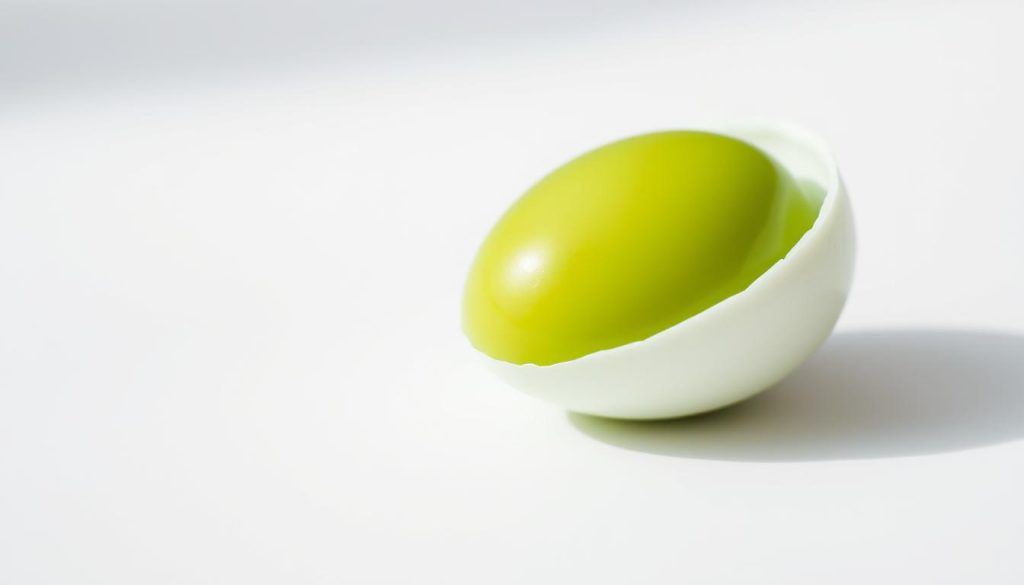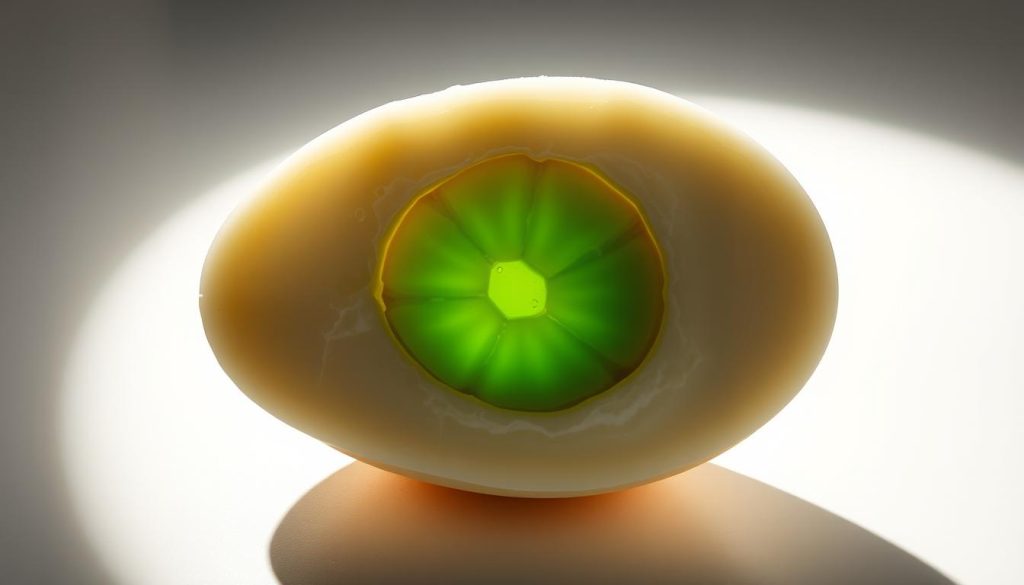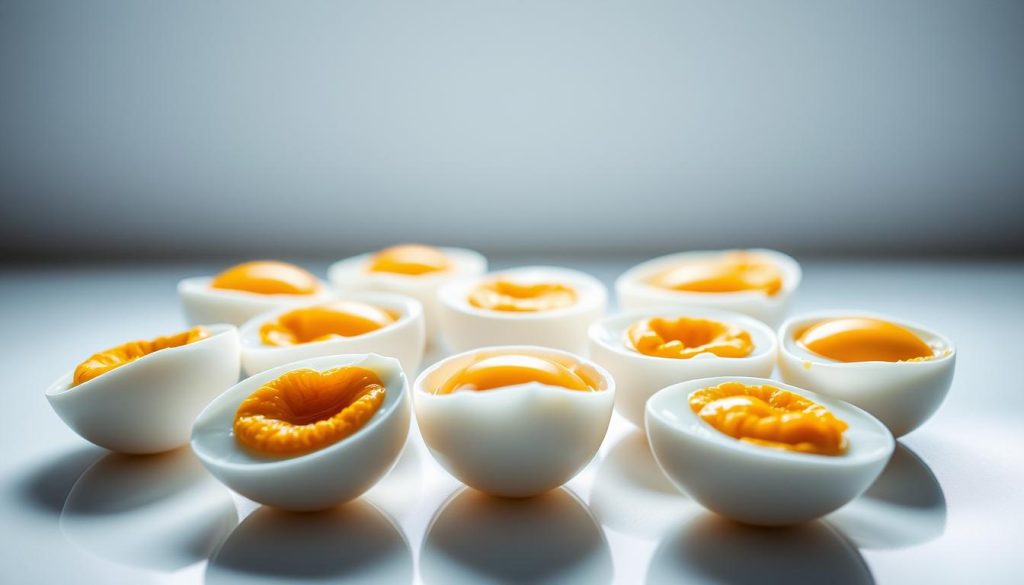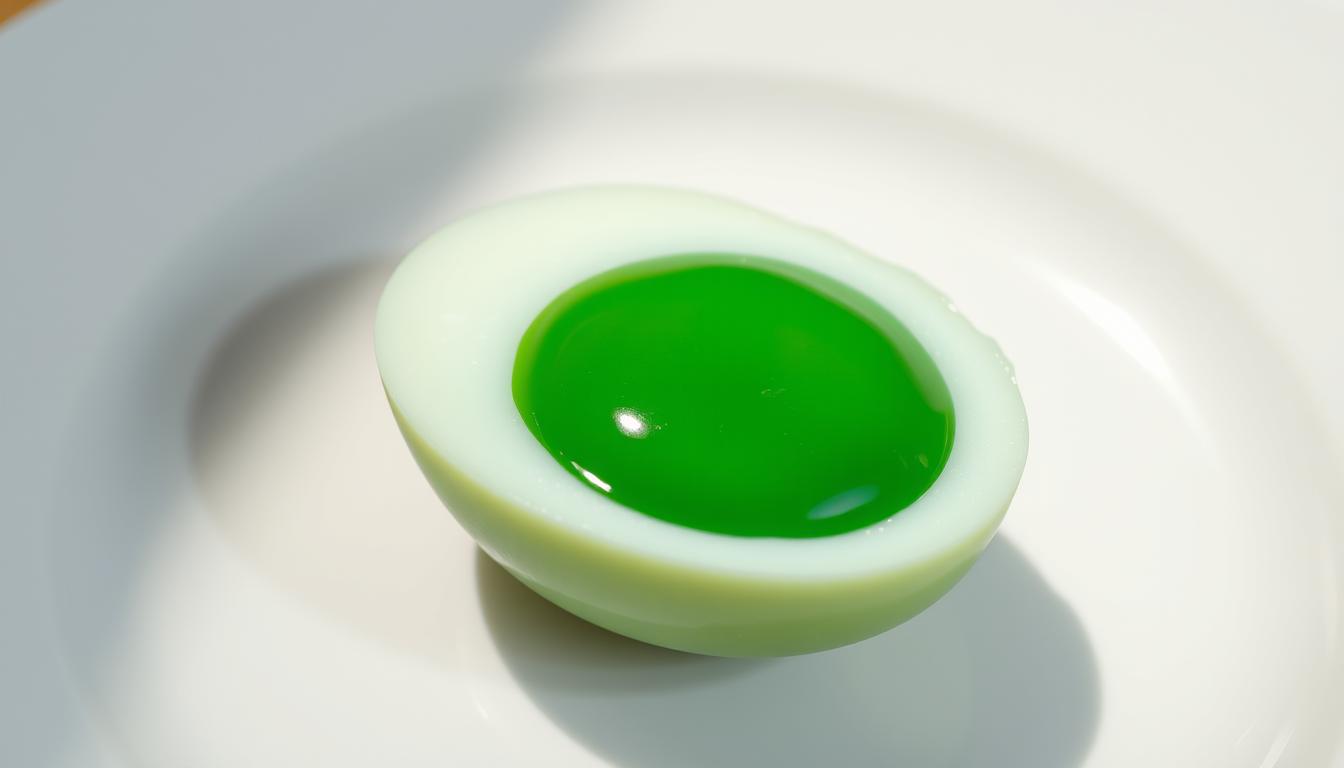Did you know 65% of home cooks have cracked open a perfectly cooked egg only to find an unappetizing green ring around the yolk? This chemical reaction occurs in over 100 million American kitchens annually, transforming breakfast staples into something that looks straight out of a science experiment.
When proteins in the yolk and white break down under high heat, they create a compound called ferrous sulfide. Food scientist Dr. Dawn M. Bohn explains this process happens faster when eggs are boiled too long or at extreme temperatures. The result? A harmless but visually startling color change that puzzles even experienced cooks.
This phenomenon isn’t exclusive to boiled preparations. Your favorite scrambled or omelet dishes can develop similar discoloration if cooked aggressively. The good news? Understanding the science behind it helps prevent the issue entirely—and ensures your next brunch spread stays picture-perfect.
Key Takeaways
- Overcooking triggers a sulfur-iron reaction in yolks
- High heat affects all egg dishes, not just boiled versions
- Food scientists confirm the color change is harmless
- Proper cooking techniques prevent discoloration
- Visual changes don’t indicate spoilage or contamination
Understanding Why Hard-Boiled Eggs Turn Green Inside
Ever notice how some cooked yolks develop a metallic hue? This transformation stems from natural elements in every egg. The egg white contains sulfur-rich proteins, while the egg yolk holds iron particles. When heated excessively, these components interact chemically.

The Role of Sulfur and Iron
Dr. Dawn M. Bohn, a teaching associate professor in the Department of Food Science and Human Nutrition, clarifies: “High heat forces sulfur from the egg white to bond with yolk iron, forming ferrous sulfide.” This compound creates the characteristic green-gray tint. Even your cooking water matters—high iron levels accelerate the reaction.
Effects of Overcooking on Egg Yolk Color
Extended cooking times intensify color changes. Proteins undergo denaturation, permanently altering their structure. Once this process occurs, the discoloration can’t be reversed. The longer you boil eggs, the more pronounced the green ring becomes around the hard-boiled egg yolk.
Timing proves critical. Stop cooking immediately after reaching the desired doneness. Rapid cooling in ice water halts residual heat effects. This simple step preserves both texture and appearance, keeping yolks sunny yellow instead of swamp green.
The Science Behind Overcooking and Denaturation
The secret to avoiding unappetizing yolks lies in mastering three key elements. Protein denaturation—a process studied at the University of Illinois and Washington State University—occurs when heat permanently alters egg proteins. This structural change unlocks sulfur and iron atoms, setting the stage for discoloration.

Heat, Temperature, and Time Factors
Higher temperatures accelerate molecular activity. Researchers at the Department of Food Science found that water boiling above 212°F (100°C) pushes proteins to break down faster. This intensity speeds up sulfur-iron bonding, creating that telltale green layer.
Timing matters just as much as heat intensity. Extended cooking gives molecules more opportunities to react. A 12-minute boil causes twice the discoloration of a 9-minute simmer, according to human nutrition university studies.
Once denaturation occurs, there’s no reversing it. Food scientists emphasize cooling eggs immediately in ice water. This stops residual heat from continuing the chemical reaction, preserving both color and texture.
Commercial kitchens use precise temperature controls to avoid these issues. By balancing heat exposure and cooking duration, they achieve consistent results—a technique home cooks can replicate with careful attention.
Step-by-Step Guide to Perfect Hard-Boiled Eggs
Food scientists at Washington State University School of Food Science revolutionized egg preparation with a simple truth: gentle heat yields better results. Assistant Professor Stephanie Smith’s research shows aggressive boiling creates unnecessary risks. Her method uses residual heat for precise doneness control.

Preparing the Eggs and Water
Start with a single layer of eggs in your pan. Cover them with cold tap water until submerged by one inch. This prevents temperature spikes that cause uneven cooking. Bring to a rolling boil over medium-high heat, then immediately turn off the burner.
| Egg Size | Stand Time | Yolk Texture |
|---|---|---|
| Medium | 12 minutes | Firm, no green ring |
| Large | 15 minutes | Creamy center |
| Extra-Large | 18 minutes | Fully set |
Cooling, Peeling, and Finishing Techniques
Transfer cooked eggs to an ice bath immediately. The shock stops residual cooking and contracts the inner membrane, making shells easier to remove. For best peeling results:
- Use eggs aged 7-10 days
- Roll gently on countertop to crack shells
- Peel under running water
This approach prevents sulfur-iron reactions by eliminating prolonged high heat. You’ll achieve consistent results whether making deviled eggs or protein-packed snacks.
Food Safety, Taste, and Serving Suggestions
Many home chefs wonder if discolored yolks compromise their meals. Rest assured – that greenish tint signals chemistry, not contamination. Dr. Stephanie Smith from Washington State University confirms: “The iron sulfide causing discoloration matches the type found in dietary supplements”.
Ensuring Safe Consumption
Fully cooked eggs with green yolks eliminate salmonella risks present in undercooked versions. With only 1 in 20,000 eggs carrying this bacteria, proper cooking remains crucial for preventing foodborne illness. Use this comparison table to make informed choices:
| Preparation | Safety Level | Texture |
|---|---|---|
| Runny yolks | Higher risk | Creamy |
| Green yolks | Safe to eat | Slightly chalky |
Creative Serving Strategies
Transform visually challenged yolks into appealing dishes:
- Mash with avocado for vibrant spreads
- Layer under fresh herbs in sandwiches
- Mix chopped olives into egg salad
Refrigerate cooked eggs in sealed containers and consume within seven days. Flavor boosters like capers or basil mask any textural changes while maintaining food safety standards.
Conclusion
What if every brunch could feature flawless golden yolks? Armed with insights from Washington State University researchers, you now hold the keys to preventing sulfur-iron reactions in cooked eggs. The chemistry behind discolored yolks transforms from mystery to manageable kitchen science.
Proper technique proves simpler than you might expect. Bring water to a boil, then let residual heat do the work. This method – validated by food science experts – prevents overcooking while ensuring food safety. Immediate ice baths stop chemical changes, preserving appetizing colors.
Even if green tints appear, your dishes remain versatile. Blend affected yolks into spreads or chop them for salads. For scrambled eggs and omelets, moderate heat maintains ideal textures without odd hues.
Remember these essentials:
1. Timed cooking prevents sulfur buildup
2. Rapid cooling locks in freshness
3. Creative recipes mask any discoloration
With this knowledge, you’re ready to peel hard-boiled eggs confidently and craft visually appealing meals. Your next breakfast spread will showcase both culinary skill and scientific understanding.



